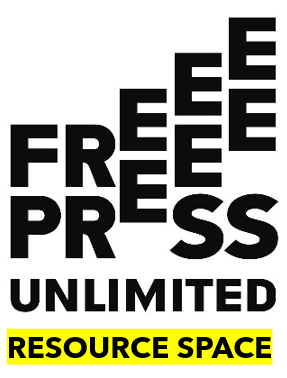Free Press Unlimited’s work on the safety of journalists is premised on a number of key international instruments which reflect international commitments to work towards improving the safety of journalists.
International Convention on Civil and Political Rights (ICCPR) (1966)
Article 19 of the ICCPR prescribes the right to hold opinions without interference and the right to freedom of expression, including the ‘freedom to seek, receive and impart information and ideas of all kinds, regardless of frontiers, either orally, in writing or in print, in the form of art, or through any other media of his choice’. Press freedom follows from the right to freedom of expression.
Article 6 and article 9 prescribe the right to life and the right to liberty and security of one’s person, respectively, essentially stipulating the right to be safe.
Human Rights Committee General Comment No. 34 (2011)
The HRC, responsible for overseeing and interpreting the rights enshrined in the ICCPR, regularly publishes general comments on the interpretation of the ICCPR, such as General Comment No. 34. This General Comment, among other things, explains the rights held under article 19 of the ICCPR, what justifies infringements of this article, and the relationship between articles 19 and 20.
Geneva Conventions (1949) and Additional Protocol I to the Geneva Conventions (1977)
Humanitarian law provides for a special status for journalists in situations of international armed conflicts. This entails that journalists are entitled to all the protections afforded to civilians in times of conflict, provided that they do not take up arms. An intentional attack against civilians, including journalists, constitutes a war crime.
UN Human Rights Council resolutions 21/12 (2012), 27/5 (2014), 33/2 (2016), 39/6 (2018) and 45/18 (2020) on the safety of journalists
These five resolutions acknowledge the particular role played by journalists in matters of public interest and strongly condemn all kinds of attacks against journalists. They underline the importance of taking a gender-sensitive approach when considering measures to address the safety of journalists, and call for independent investigations to bring perpetrators to justice. These resolutions task the High Commissioner to prepare an overview of available avenues for obtaining assistance on the regional or international level, with a view to providing an analysis of the effectiveness of these avenues. This briefing paper by ARTICLE 19 provides an in-depth exploration of UN Human Rights Council resolution 33/2 and its threefold approach (prevent, protect and prosecute).
UN General Assembly resolutions 68/163 (2013), 69/185 (2014), 70/162 (2016), 72/175 (2017) and 74/157 (2019) on the safety of journalists and the issue of impunity
These resolutions set forth measures that states should take to create and maintain a safe and enabling environment, both in law and in practice, and to ensure accountability. The 2013 resolution proclaimed November 2nd as the International Day to End Impunity for Crimes against Journalists. The 2016 resolution furthermore acknowledges the role of non-traditional information providers, online as well as offline.
UN Security Council Resolution 2222, on the protection of journalists, media professionals and associated personnel in armed conflicts (2015)
This resolution recalls that journalists, media professionals and associated personnel engaged in dangerous professional missions in areas of armed conflict shall be considered as civilians and shall not be the object of attack or reprisals. The resolution also urges the immediate and unconditional release of journalists, media professionals and associated personnel who have been kidnapped or taken hostage in situations of armed conflict.
Target 16.10 of the Sustainable Development Goals (SDGs) 2030 Agenda (2015)
SDG target 16.10 aims to ensure public access to information and the protection of fundamental freedoms in accordance with national legislation and international agreements. An important indicator to measure progress towards SDG target 16.10 (being SDG indicator 16.10.1) sets out that all verified cases of killing, kidnapping, enforced disappearance, arbitrary detention and torture of journalists, associated media personnel, trade unionists and human rights advocates are to be reported by the Office of the UN High Commissioner for Human Rights (OHCHR) and the UN Educational, Scientific and Cultural Organisation (UNESCO). As such, it constitutes an important monitoring mechanism for journalist safety.
Recommendation CM/Rec(2016)4 on the protection of journalism and safety of journalists and other media actors (2016)
Recommendation CM/Rec/(2016)4, adopted by the Committee of Ministers of the Council of Europe, condemns the alarming and unacceptable level of threats to journalists and media actors in Europe and provides specific guidelines to member states to act in the areas of prevention, protection, prosecution, promotion of information, education and awareness rising. The Council of Europe is continuously working on the implementation of CM/Rec(2016)r by supporting national authorities through cooperation assistance activities and by providing responses to challenges to media freedom and safety of journalists.
